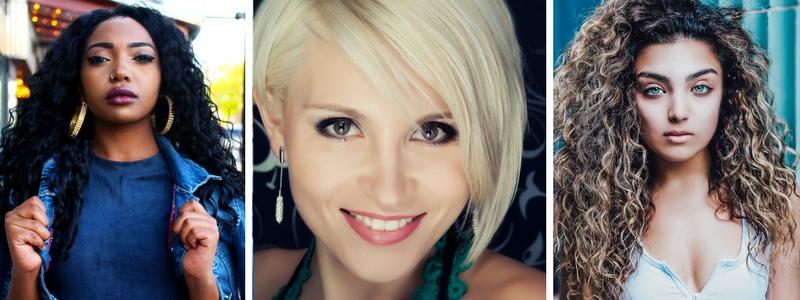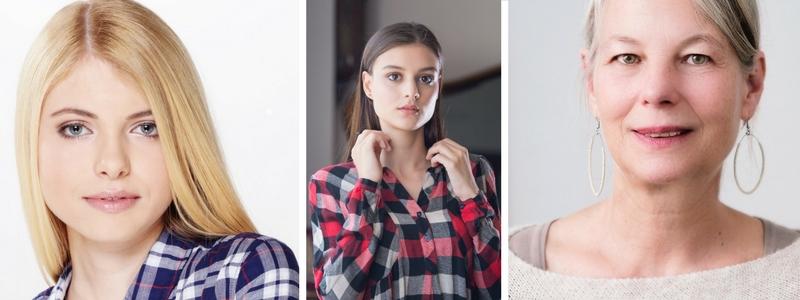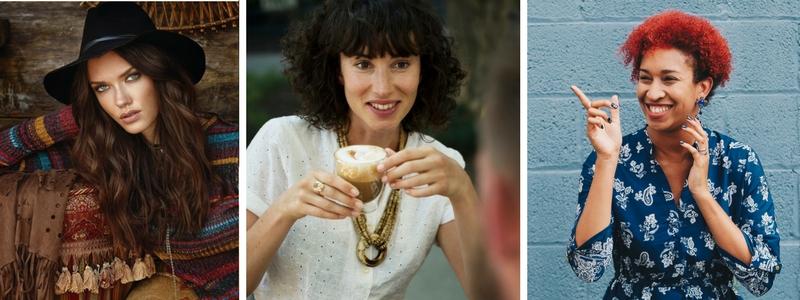Who Am I? Part 1—Color Archetype
Episode #1 of the course Lazy person’s guide to a perfect wardrobe by Andrea Pflaumer
Hi there, lazy fashionista! Andrea here and I feel your pain. Fashion often seems anxiety producing, an elusive and complicated problem to solve. But I love solving problems, and I love explaining solutions in plain language. Getting your wardrobe right is simply about understanding the right process. Start with that and the right outcome is inevitable.
Over the course of ten weeks, you will learn principles to create a simple, fashionable, affordable wardrobe—principles that will serve you throughout your lifetime.
Today, we start with understanding your best clothing colors, which is the first key to a simple and uncomplicated wardrobe. These colors are the ones that will make your eyes and skin “come alive.”
Every human’s hair, skin, and eye colors harmonize with colors found in the natural world. If you read somewhere that your coloring is based on one of the four seasons, that’s partially right. Realistically, few people have a color palette that falls into only one season.
Using the following guidelines, write down the letters in parentheses that follow every point that describes you. We’ll explain afterward what those letters mean and how they contribute to your unique palette colors.
My skin texture/color is:
1. smooth and very fine (SC)
2. extremely light or extremely dark (almost blue/black) (SC)
3. so transparent, I can see my veins (SB)
4. looks slightly purple (SB)
5. is mottled and/or blushes peachy pink (LB)
6. has more texture than smoothness (ER)
7. has freckles (LB, ER)
8. looks slightly yellowish (ER)
My facial bone structure is:
1. long and oval (SC)
2. oval but not long, more broad (SB)
3. mostly round (LB)
4. heart-shaped (LB)
5. square, diamond-shaped, or has angles (ER)
The natural color of my hair in young adulthood is/was:
1. jet black or extremely pale yellow (SC)
2. medium brown, golden yellow, or bright red (LB)
3. duller brown, pale red, or pale yellow (SB)
4. dark red or auburn (ER)
5. medium brown or brunette (ER)
My eyes are:
1. very dark brown, black, crystal blue, or almost lavender (SC)
2. bright blue, green, or hazel (LB)
3. brown, gray, or pale blue with a ring around the iris (SB/ER)
4. hazel, medium brown, amber, or green (ER)
Now total up all your SCs, LBs, SBs, and ERs.
SC stands for what we call Striking Contrast. People with this color harmony can wear deeply saturated, clear colors. And they must not be afraid to wear them against each other. Although much of this palette is considered to have cooler undertones, their reds, yellows, and oranges are brilliant. In terms of seasons, we would call them, “winters.”

Striking Contrast (Winter)
LB stands for Lively Bright. Those who scored high in this palette can wear bright colors that aren’t as saturated: They’re lightened by adding some white to the hue. This is the one harmony that can wear several palette colors at the same time and not look odd. Lively Bright is associated with the “spring” colors prevalent in that season.

Lively Bright (Spring)
SB stands for Subtle Blended. This is most misunderstood of all the color harmonies because it’s so subtle. The entire palette is influenced by gray/blue undertones. Since the SB’s skin, hair, and eye colors of these individuals don’t contrast much, the colors they wear must blend gently. Intensity makes them disappear. Like LB, they can wear multiple palette colors in prints, since none will be overwhelming.

Subtle Blended (Summer)
Finally, ER stands for Earthy Rich, or autumn colors. This palette is one of warmth, depth, and earthiness. The closest these people can get to color contrast is by wearing a dark neutral with a brighter color. Wearing very dark colors with very light ones will overshadow them.

Earthly Rich (Autumn)
Now consider your crossovers. Every additional seasonal influence will alter your primary one. Some amount of SC intensifies your palette colors, LB brightens and lightens them, SB softens and grays, and ER deepens and warms. Your unique combination of all these will be the template for your entire wardrobe.
In Lesson #2, we will explore your fashion archetypes. This will set the tone for your wardrobe “template” for the rest of your life. See you tomorrow!
Recommended book
Color Your Style: How to Wear Your True Colors by David Zyla
Share with friends

